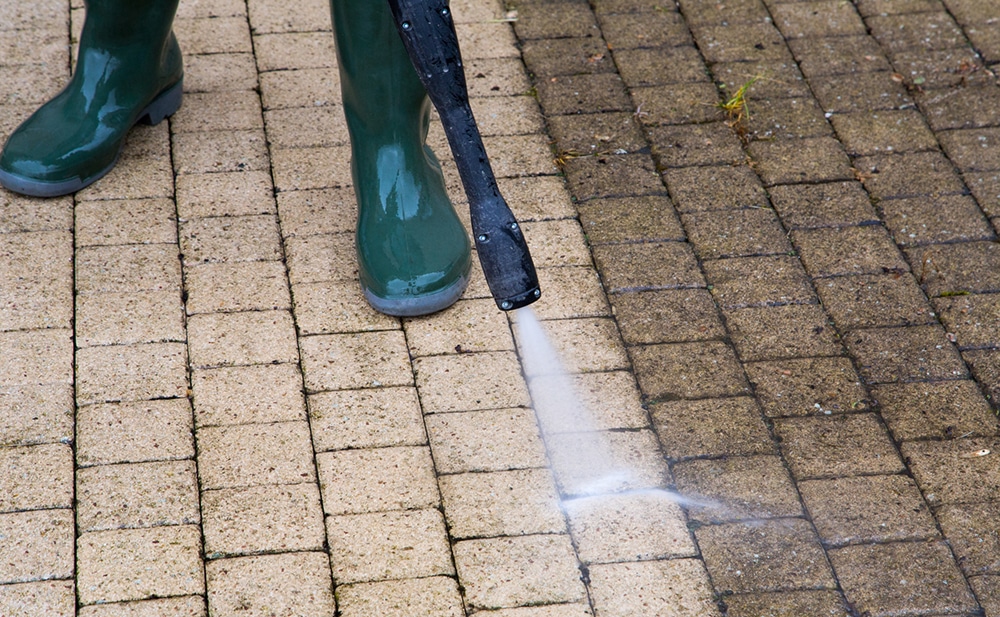Is the outside of your home looking dirty and dingy, but you don’t want to spend all day up on a ladder scrubbing away? Maybe it is time to try power washing.
When you power wash your home’s siding, you can cut the time you spend cleaning your home in half, while getting your house cleaner than washing by hand. But you better know what you are doing or you may cause a lot of unwanted damage. Improper pressure washing can leave the siding on your home loose, pitted or water-logged, ending up costing you thousands of dollars to repair. You can learn how to power wash your house the smart way with these tips.
Five Power Washing Tips
Choose the right washer.
There are many types of power washers available. Choosing which one is right for your job can be confusing. Here is a general overview of the types of power washers available:
- Consumer models with electric motors. These models plug into an outlet and are lightweight and easy to move. They are good for light jobs such as washing your car or cleaning lawn furniture.
- Consumer models with gas motors. These gas-powered models are great for heavy-duty jobs like cleaning sidewalks and siding.
- Professional models with gas motors. These powerful beasts are ideal for stripping paint and removing mold and mildew from hard surfaces.
Safety always comes first.
Water under high pressure is dangerous and you can injure yourself or others, so always operate a pressure washer correctly. Try to ask a user who knows how to handle a power washer to show you the correct way to operate a power washer safely before you use one for the first time.
Keep safe by:
- Reading the instructions to understand how to operate your power washer
- Turning off the power to outside power connections
- Wearing the right protective clothing including safety glasses and ear protection
- Never standing on a ladder or unstable surface while using a power washer
- Never point the power sprayer at other people or animals
Inspect and prep your home.
Prior to pressure washing your house, you need to inspect it. Walk around your home and look for any signs of damage to the exterior such as cracked stucco, loose siding or missing mortar. Pressurized water can make a small problem grow, therefore, it makes sense to fix any problems before power washing. All problems can turn into a costly repair, so it makes sense to fix any before power washing. One additional warning when working on an older house is to make sure there are no signs of asbestos or lead paint. If you discover either, do not power wash and contact a remediation company for advice.
Know the surface.
Your home’s outdoor surface makes a difference when power washing. Here are tips for tackling three common exteriors:
- Bricks. Over-saturate the bricks with water before applying detergent. This prevents the chemicals from soaking into them. Power wash from the bottom to the top. Let the bricks dry and then use a dry wire brush to remove any residue.
- Stucco. Patch any cracks or holes in the stucco and let dry. Use a detergent made for stucco and wash from the bottom to the top of your home. Adjust the nozzle of the power washer so the water strikes the side at a 45-degree angle.
- Siding. Repair any missing or cracked siding. Use a detergent which is made for your type of siding and work the power sprayer from the top down to avoid spraying under the siding.
Don’t forget your gutter.
Clogged gutters can create leaks, so remember to clean them. Buying a special attachment for power washing gutters makes it quick and easy.
Do you still have questions? Talk to our team here at Green Acres Landscape, the how to power wash house experts. Call (503) 399-8066 to book an appointment today.

